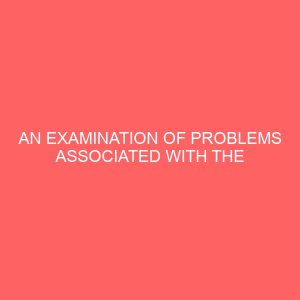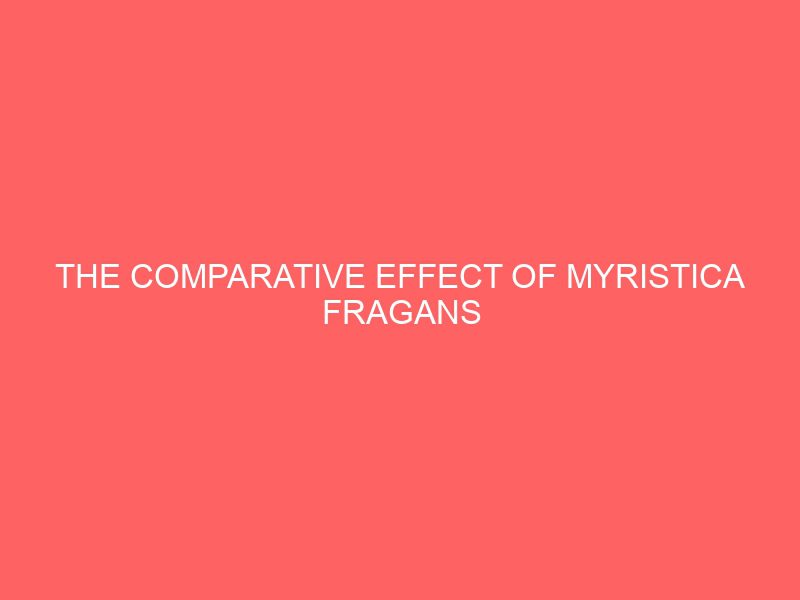Description
CHAPTER ONE
1.0 INTRODUCTION
This research is on The comparative effect of myristica fragans (nutmeg) and aframomum melegueta (alligator pepper) on demestes maculatus degeer.
Fish protein is known to be the best and cheapest source of animal protein (Olayide 1973). The loss of protein in dried fish due to the fish pest, D. Macuatus has been variously studied. Fish is a perishable commodity especially in the tropics where high temperature and humidity accelerate spoilage and Biodeterioration of fish immediately after catch. As a result of this, efforts are primarily directed towards the preservation of fish for human food. However, poor handling, inadequate processing facilities, lack of ice or storage facilities, remoteness of the fishing villages to urban market centers and poor distribution channels have drastically reduced fish utilization in the tropics (Ames,1992). Efforts at the use of synthetic insecticides and other methods to control D. Maculatus have not presented pleasant results. This has led to a search for alternative source of user friendly methods especially the use of botanicals to control D. Maculatus (Okorie et al 1991).
The use of chemical pesticides has helped to increase the yields obtained but one of the major problems with the constant use of chemicals is that resistance can be induced in target organisms. Biological method of control has been preferred in some cases because it is selective with no side effect and cheap. Resistance to biological control is rare and biological control agents are self propagating and self perpetuating (Okigbo and Ikediugwu 2000; Okigbo, 2003—-2005).
Plant extracts have been used successfully to control insect pests in the tropics. (Amadioha and Obi, 1999; Onitade 2000. Emoghene, 2004). The practice of applying synthetic insecticides has been found to be potentially dangerous when such fish is consumed. In some villages in Ghana where fish have been treated in this manner, people who consumed them, suffered blurred vision, dizziness and vomiting (Bull 1982).
Losses due to this pest of products of animal origin have been properly documented for a very long time (Aret, 1964, Willams 1956, Proctor, 1970, Kimura and Takakura).
Dry fish is however susceptible to pest infestation. Osuji (1973) noted that D. Maculatus is the major pest of dry fish with occasional presence of others like Necrobia rufipes, Tribolium, Castenum and Trogoderma, granamium. The two are pests of other products. The importance of D. Maculatus in Nigeria has been highlighted (Hayward 1961). Researches have extended to the use of extracts of water and alcohol extracts of such botanicals as P. guineese, Xylopia aethiopica, Myristica fragrans etc.
All these have proved effective but methods of extraction have proved to be very expensive and not even within the reach of the common market woman hawking her dry fish in the market. The crude powder, though effective in most cases are cumbersome in application and may even negate the rates of application and affect the appearance of dried fish.
This study is seeking the best and most effective way of applying these botanicals to the fish so that it will appear like ordinary dry fish edible and resistant to infestation of D. maculates and possibly other pest.
Water and alcohol are edible solvents that could be used to infuse the active ingredients in plant extracts for the control of insect pests of smoke-dried fish.
The simple methods engaged could be steaming, boiling and soaking fish in such media in which different doses of the botanicals are tested. The botanicals to be used are alligator pepper; (A. Melegueta) and nutmeg M. fragans.
Our target is to find out the following;
- To investigate Whether the active ingredients of M. fragrans and A. Melegueta can be infused into the fish through water and absolute alcohol extracts and used to control insect pest (Dermestes maculatus) of smoke-drised fish.
- To compare the result obtained (mortality rate) with documented result of crude powder treatment which were found to be effective in controlling the insect pest.
- To find out if fish treated with solutions of these botanicals at different concentration will still be palatable and aesthetically attractive
- To compare the effective needs of the botanicals used.
- To profer recommendations based on my findings.







